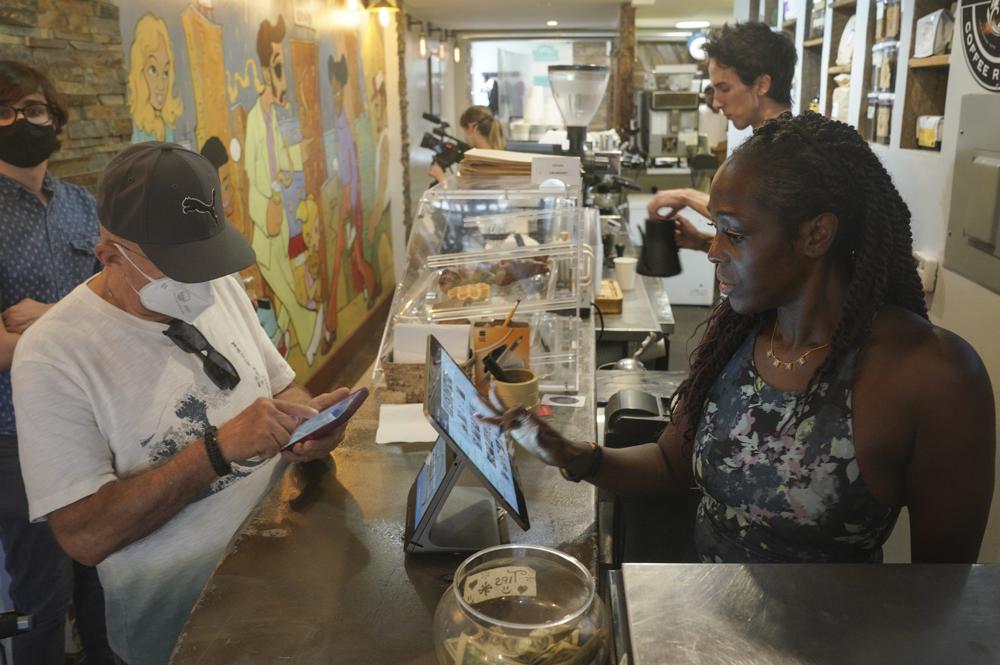Income inequality in the U.S. increased last year for the first time in more than a decade, but childhood poverty was cut almost in half due to expansion of the federal government’s child tax credit and stimulus payments made in response to the COVID-19 pandemic, according to new survey results released Tuesday by the U.S. Census Bureau.
The income inequality index increased 1.2% from 2020 to 2021, the first time the measurement known as the Gini Index has increased since 2011, according to a report on Current Population Survey results.
Declines in household income among the poorest U.S. residents appears to have driven the widening of the income inequality gap. Households in the 90th percentile of the income distribution, the richest, had income that was 13.5 times higher than households in the 10th percentile, the poorest. That was a 4.9% increase from 2020.
“It is sensitive to extremes at either end,” said Liana Fox, a Census Bureau official. “This suggests that the decline in real income at the bottom drove the increase in the Gini index.”
For the most part, there was little year-to-year change in median household income based on demographic traits like race or ethnic background.
However, people in households headed by someone age 65 or older, those with only some college education and households where family members didn’t live together saw dips in their income from 2020 to 2021. Among the reasons was that the fixed income that many seniors are on didn’t keep pace with rising inflation in 2021, and many of the “nonfamily” households were headed by women whose income lagged those headed by men.
Households headed by people with at least a college degree saw bumps in overall income last year.
Broken down by race and ethnic background, Asian households in 2021 had the highest median income at $101,418, followed by non-Hispanic whites at $77,999 and Hispanics at $57,981. Black households had median income of $48,297.
Median incomes were highest in the West at $79,430 and the Northeast at $77,472, followed by the Midwest $71,129 and the South at $63,368.
The time period in the latest Current Population Survey covered the third round of pandemic-related stimulus payments and expansions to the Child Tax Credit, Earned Income Tax Credit and the Child and Dependent Care Credit. The time period in the survey also saw a 4.7% increase in consumer prices, the largest annual increase in the cost-of-living adjustment since 1990.
The expansion of the Child Tax Credit helped reduce childhood poverty, as measured by the bureau’s Supplemental Poverty Measure, from 9.7% in 2020 to 5.2% last year. It is the lowest since the new measure was implemented in 2009.
“The new data show the significant impact the expansion of anti-poverty programs during the COVID-19 pandemic had on reducing child poverty,” the Census Bureau said in a report.
The pandemic-related stimulus also helped the overall population.
The Census Bureau calculates poverty in two ways — the “official” poverty rate and the Supplemental Poverty Measure, which incorporates government programs designed to help low-income families. The official poverty rate last year was 11.6%, or 37.9 million people, and it wasn’t statistically different from what it was in 2020. The Supplemental Poverty Measure last year was 7.8%, a drop of 1.4 percentage points from 2020 and the lowest in the dozen years that it has been calculated.
The differences between the two rates is attributable to the pandemic assistance from the federal government, with refundable tax credit expansions keeping 9.6 million people out of poverty and stimulus payments doing the same for 8.9 million people, the Census Bureau report said.
(AP)







2 Responses
Lifting up the poor is important.
How much more the richest have is not.
We need to continue to address poverty.
Focusing on income inequality is focusing on envy and spite at the expense of the real problem.
“Focusing on income inequality is focusing on envy and spite at the expense of the real problem.”
I have seen studies suggesting that historically growing income inequality is associated with disruption in the social order so perhaps it is a real problem.
But beyond this concern of disruption, logically there should be two primary caused of increasing or decreasing childhood poverty. One, income disparity increases while economic output remains flat that results in wealthier people consuming more, which results in less for everyone else to consume. And two, income disparity remains flat, but economic output decreases resulting in less available for people who were already pretty much limited to buying only what they absolutely needed.
Maybe my simple thinking here is wrong, but I think not. If right, then income inequality is a real concern.
The issue I would have with such a report is in the way income inequality is measured. If measured based on traditional income and ignores increasing benefits in that calculation (e.g. thousands of dollars in additional child credits, food programs whether at home or school, and so on) it is not a true measure of income inequality because it is not taking into account social programs that redistribute some of that wealth. Given that child poverty declined, despite the headline income inequality increasing, I would suspect that it may have possibly declined.
Regardless these numbers are of relevance generally over a period of time, especially when you want to craft policy in response, rather than just looking short-term when countless factors can skew results.